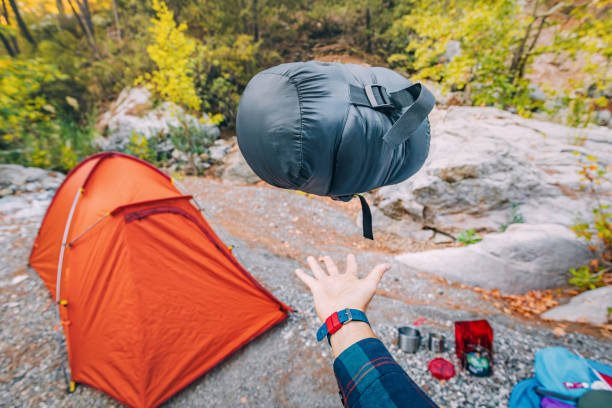Your Backpacking Tent is your home away from home, a trusty shelter that protects you from the elements and provides a cozy respite after a long day on the trail. However, proper tent care is essential to ensure its longevity and reliable performance for years to come. In this comprehensive guide, we’ll delve into the art of backpacking tent maintenance, covering everything from setup and strike to cleaning, storage, and repair.
The Importance of Proper Tent Care
A well-maintained backpacking tent is not only a worthwhile investment but also a key factor in ensuring your safety and comfort on the trail. Neglecting tent care can lead to premature wear and tear, compromising its weatherproofing abilities and structural integrity, leaving you exposed to the elements.
Proper tent care begins from the moment you take it out of its stuff sack. Carefully inspecting your tent before each trip can help identify any potential issues, such as worn or damaged components, allowing you to address them before they become more significant problems.

During your backpacking adventures, taking care to set up your tent on a suitable surface, free from sharp objects or abrasive materials, can prevent unnecessary damage to the tent floor and body. Utilizing a footprint or groundsheet can further protect the tent’s underside from punctures and abrasion.
Extending the Life of Your Tent
After each use, it’s crucial to strike your tent properly and ensure it’s completely dry before storing it. Leaving a damp tent packed away can lead to mildew growth, compromising the integrity of the fabrics and potentially causing irreversible damage. If your tent does get wet, be sure to unpack and thoroughly dry it as soon as possible.
Regular cleaning is also essential to maintain your tent’s performance and appearance. Dirt, dust, and other debris can accumulate over time, potentially clogging mesh panels and reducing breathability. Proper cleaning techniques can help remove these contaminants, ensuring optimal ventilation and preventing moisture buildup.
Setting Up and Striking Your Tent
Paragraph 2 (564 words): The way you set up and strike your tent can have a significant impact on its longevity. Here are some best practices to follow:
Setting Up:
- Choose a suitable campsite: Look for a level, well-drained area free from sharp rocks, sticks, or other debris that could damage the tent floor.
- Clear the area: Remove any loose objects or debris from the tent site to prevent punctures or abrasions.
- Use a footprint or groundsheet: This additional layer acts as a barrier between the tent floor and the ground, protecting it from wear and tear.
- Follow the manufacturer’s instructions: Carefully read and follow the setup instructions provided by the tent manufacturer to ensure proper assembly and avoid damaging the poles or fabric.
- Stake out the tent properly: Secure the tent firmly to the ground using the provided stakes and guylines. This will help prevent the tent from shifting or collapsing in windy conditions.
Striking Down:
- Dry the tent thoroughly: If the tent is wet or damp, allow it to dry completely before packing it away. Moisture can lead to mildew growth and fabric degradation.
- Remove any debris: Shake out the tent and remove any dirt, leaves, or other debris that may have accumulated inside or on the tent body.
- Follow the reverse setup process: Carefully follow the reverse order of the setup instructions, taking care not to twist or bend the poles excessively.
- Stuff the tent properly: Loosely stuff the tent into its stuff sack, avoiding tight compression, which can cause creases or folds in the fabric that can lead to delamination or wear over time.
Camp Setup and Strike Tips
- Pitch your tent on a tarp or footprint to protect the floor from abrasion and moisture.
- Avoid setting up your tent under trees or in areas prone to falling branches or debris.
- Use trekking poles or improvised sticks to support the tent when setting up in windy conditions.
- Always stake out your tent properly, especially in windy or stormy weather.
- When striking the tent, be gentle with the poles and fabric to prevent unnecessary stress or damage.
- Shake out any loose dirt or debris from the tent before packing it away.
Tent Care Checklist
| Task | Frequency |
|---|---|
| Inspect tent before each trip | Every trip |
| Set up tent properly | Every use |
| Strike tent properly | Every use |
| Clean tent (mild soap and water) | After each trip |
| Dry tent thoroughly before storage | After each use |
| Apply seam sealer or waterproofing treatment | Annually or as needed |
| Check for damage and make necessary repairs | Before and after each trip |
| Replace worn or damaged components | As needed |
Cleaning and Waterproofing Your Backpacking Tent
Proper cleaning and waterproofing are essential aspects of backpacking tent care. Over time, dirt, dust, and other contaminants can accumulate on the tent fabric, compromising its breathability and water resistance. Regular cleaning can help remove these buildups and prolong the life of your tent.
Cleaning:
- Set up the tent completely and remove the rainfly or outer layer.
- Use a soft-bristled brush or sponge and a mild, non-detergent soap (like a camping-specific cleaner or diluted dish soap) to gently scrub the tent body and rainfly.
- Rinse thoroughly with clean water to remove all soap residue, as leftover soap can attract dirt and break down waterproofing.
- Allow the tent to air dry completely before reassembling and storing it.
Waterproofing: Over time, exposure to UV rays, precipitation, and general wear can degrade the waterproofing capabilities of your tent’s fabrics and coatings. Periodic waterproofing treatments can help restore or enhance water repellency, ensuring your tent remains dry and comfortable during inclement weather.

- Follow the manufacturer’s recommendations for suitable waterproofing products and application methods.
- Ensure the tent is clean and completely dry before applying any waterproofing treatment.
- Apply the waterproofing product evenly across the tent body, rainfly, and seams, following the product’s instructions carefully.
- Allow the waterproofing to cure or dry completely before packing or using the tent.
Tent Repair and Component Replacement
Inevitably, even with proper care, your backpacking tent may sustain some wear and tear over time. Minor repairs, such as patching small holes or tears, can often be performed using tent repair kits or adhesive patches. For more significant damage or component replacement, it’s best to consult the tent manufacturer or a professional repair service.
Common components that may need replacement over time include:
- Tent poles
- Stakes or guylines
- Zippers
- Mesh panels
- Tent body or rainfly fabrics
Frequently Asked Questions
How often should I clean my backpacking tent?
It’s recommended to clean your tent after each trip or at least once a season, depending on usage and exposure to dirt, debris, or contaminants.
Can I use a regular laundry detergent to clean my tent?
No, regular laundry detergents can leave residues that attract dirt and break down waterproofing. Use a mild, non-detergent soap or a camping-specific cleaner instead.
How do I know when to apply a waterproofing treatment?
If water stops beading up on the tent fabric or if you notice moisture seeping through, it’s time to reapply a waterproofing treatment.
Can I store my tent while it’s damp?
No, storing a damp tent can lead to mildew growth and fabric degradation. Always ensure your tent is completely dry before packing it away for storage.
How often should I replace my tent poles or stakes?
Tent poles and stakes should be inspected before and after each trip for any damage or excessive wear. Replace them as needed or follow the manufacturer’s recommendations.
Can I machine wash my backpacking tent?
It’s generally not recommended to machine wash backpacking tents, as the agitation and high temperatures can damage the tent fabrics, coatings, and components. Hand washing with a mild soap and clean water is the preferred method for cleaning your tent.
How do I store my backpacking tent properly?
Store your tent in a cool, dry place, away from direct sunlight and moisture. Avoid compressing the tent too tightly, as this can cause creases or folds in the fabric that can lead to delamination or wear over time. Consider storing the tent loosely in a breathable storage sack or hanging it up to prevent creasing.
What should I do if my tent develops mold or mildew?
If you notice mold or mildew growth on your tent, take action immediately. Brush off any surface mold or mildew, then clean the tent thoroughly with a mild soap and water solution. Allow the tent to dry completely before treating any remaining mildew stains with a specialized mildew remover or a diluted bleach solution. Ensure you rinse the tent thoroughly and reapply a waterproofing treatment after cleaning.
Closing Words
Your backpacking tent is a crucial piece of gear that not only provides shelter and protection from the elements but also contributes to your overall comfort and enjoyment on the trail. Proper tent care is essential to ensure its longevity, reliability, and performance for years to come.
By following the guidelines outlined in this comprehensive guide, you can maximize the lifespan of your tent and avoid costly repairs or premature replacements. From setting up and striking down your tent correctly to regular cleaning and waterproofing, each step plays a vital role in maintaining the integrity of your shelter.









